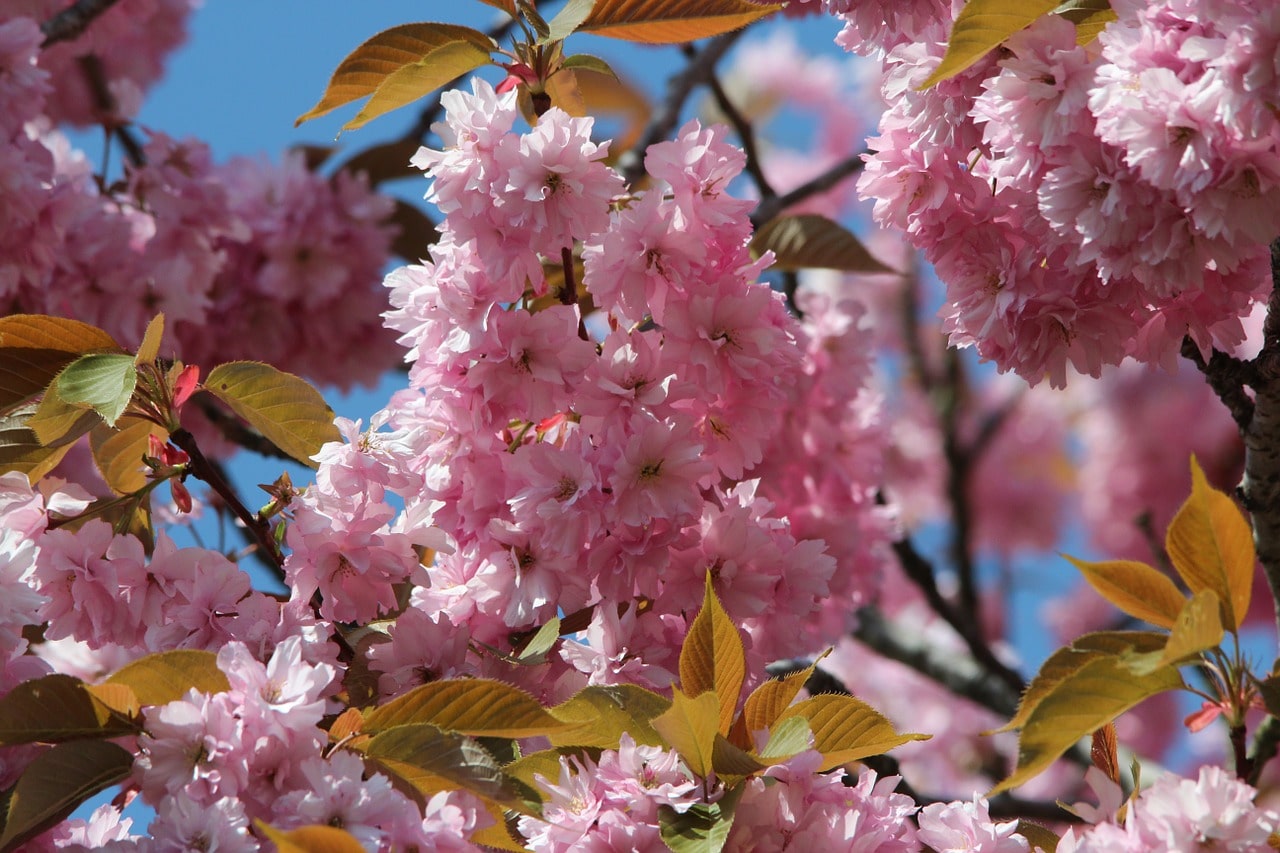
If I had to say which tree of Asian origin has become the most popular in recent times, apart from the japanese mapleI would certainly say Prunus serrulata. Why? Because it is a plant that is beautiful all year round, yes, even in winter when it has no leaves.
It produces flowers whose beauty makes any garden or patio look spectacular, and that's not to mention the color change that its leaves undergo, turning from spring green to orange-red in autumn.
What is the origin and characteristics of the Prunus serrulata?

In this deciduous tree (lose leaf in winter) native to Japan, Korea, and China, popularly called Japanese cherry, Japanese flowering cherry, blossom cherry, Oriental cherry, and East Asian cherry. Although its most used scientific name and by which it is best known is Prunus serrulata, is also accepted Cerasus serrulata var. 'serrulata' as:
- Prunus: is the genus to which it belongs.
- Cerasus: the subgenus.
- serrulata: the variety.
Speaking of its characteristics, you have to know that reaches a height of about 10 meters, with a more or less straight trunk (it can lean over the years) and a dense, almost hemispherical crown. The leaves are alternate, ovate-lanceolate in shape, have a serrated margin and are 5-13cm long by 2,5-6,5cm wide.
Flowers bloom in spring, in clusters while leaves emerge, and are white to pink in color. The fruit is a black, globose drupe 8 to 10mm in diameter.
What uses is it given?

Image from Wikimedia/Line1
The Japanese cherry tree is used as ornamental tree. It is a wonderful plant that can be kept as an isolated specimen, in groups or alignments. In addition, it can be worked as a bonsai.
What are the care of the Prunus serrulata?

If you dare to acquire one, it is important that you bear in mind that must be placed outside, in full sun or in a place where it receives a minimum of 5 hours of direct light. It does not have invasive roots, but like any self-respecting plant it needs its space, so I do not advise you to plant it at a distance of less than 5 meters from walls, walls, etc.
The soil must be rich in organic matter, preferably slightly acidic (pH 5-6), although it tolerates limestone. Of course, in any case, that land has to be able to quickly absorb and filter the water, since the Japanese cherry tree does not tolerate waterlogging. For this same reason, if you want to have it in a pot, it is advisable to use substrates such as akadama mixed with 30% kiryuzuna, or universal substrate mixed with 40% perlite.
Moreover, watering will be moderate to frequent. In principle and depending on the weather, it will be watered an average of 4 times a week in summer, and about 2 a week the rest of the year. During the warm season it is highly recommended to fertilize it with organic fertilizers, such as guano or mulch, for example.
Resists frosts down to -18ºC, but it cannot live in tropical climates.
I would like to know if the Japanese cherry tree adapts well to the climate of West GBA (I live in Ituzaingó) and in which months it is advisable to plant it in this area. Thanks for the report: Josefina'
Hi Josefina.
I am in Spain and I don't know what weather you have in Ituzaingó. But I can tell you that the Japanese cherry tree lives very well in temperate climates, with mild summers and winters with moderate frost and snowfall.
The ideal time to plant it is in spring, when the buds swell to the point of awakening.
Greetings.
Hello, in greater Buenos Aires, in summer, (Dec to March) temperatures can reach 35/ or more. resist?
Hi carlos.
If you have water at your disposal, you shouldn't go wrong. But in winter there must be frost so that it can grow well in spring.
Greetings.
Hello, I am looking for a Japanese cherry tree and in the nursery they tell me that the prunus is the same! I have my doubts as the prices differ quite a bit. Can you tell me if it is so, prunus = Japanese cherry tree = shakura? Thanks
Hi Karina.
I think there has been a mix up. I explain:
-Prunus: is the genus of a series of trees and shrubs, including the Japanese cherry tree.
-Prunus serrulata: is the scientific name of the Japanese cherry tree. That is, it is a type of Prunus.
Yes, it is true that other varieties of Prunus, such as Prunus incisa, are sometimes known as Japanese cherry trees.
Greetings.
Hello, I am from Córdoba, Spain, and I would like to know if the prunus serrulata, or better, a prunus avium, could be grown in a garden.
Hello Alvaro.
El Prunus avium will do better than P. serrulata. It is better adapted to the Mediterranean climate.
Regards!
Hello everyone, I wanted to know if I can transplant it into a colander and what substrate to use
Hi Luis.
If it is at least 15 centimeters tall, you can plant it in a colander. I imagine that you will want to work it as a bonsai, right? I say this because that way you get the trunk to thicken a little faster.
As a substrate you can use akadama, alone or mixed with 30% kiryuzuna or pumice.
Regards!